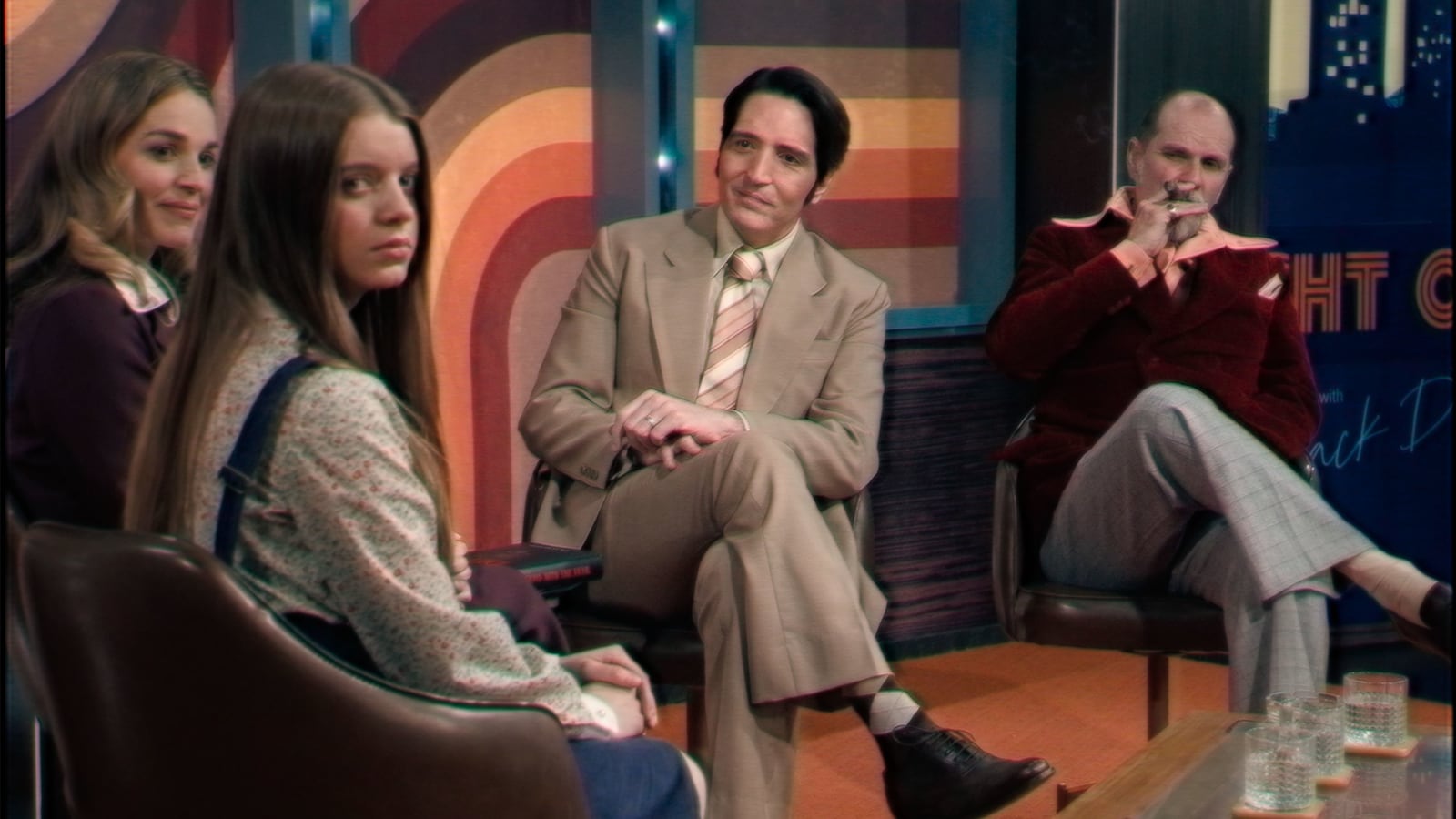Late Night With the Devil, a new horror film from directors Cameron and Colin Cairnes that hits theaters March 22, is the latest project caught using AI-generated artwork by eagle-eyed viewers.
Earlier this week, social media users flagged the apparent use of image-generating software for graphics used in teasers for the upcoming film. The posts gained traction, including one in which a Letterboxd user accused the platform of “shadow-banning” their review for criticizing the film for allegedly dabbling in AI.
In a press statement provided to The Daily Beast, The Cairnes brothers confirmed that viewers' suspicions about Late Night With the Devil’s AI use were correct.
“In conjunction with our amazing graphics and production design team, all of whom worked tirelessly to give this film the ’70s aesthetic we had always imagined, we experimented with AI for three still images which we edited further and ultimately appear as very brief interstitials in the film,” the Cairnes brothers said.
The low-budget film, which stars David Dastmalchian (The Suicide Squad, Oppenheimer), chronicles a hellish evening on the set of a fictional talk show in the late-’70s. When things go awry during a live episode taping, the show—and film—occasionally cuts to an unplanned “commercial,” with Halloween-themed eyecatches appearing on screen. While these make nearly blink-and-you’ll-miss-it appearances in the film, their inclusion in early teasers was enough to tip off viewers that something was afoot.
The most notable example is an illustration of a skeleton, whose hand appears warped—a telltale sign of the use of generative image software.
The use of artificial intelligence is a fraught topic in many industries, especially at this moment in Hollywood. Numerous union contracts have fought for protections against AI-assisted or -generated work, including the newly ratified Writers Guild of America and Screen Actors Guild contracts. Both contract renegotiations were prolonged fights, with AI a particular sticking point between creators, performers, and the studios that employ them.
But while both contracts have provisions about how AI can be used in regards to on-screen performances and writing, they don’t cover the use of it in art and illustration. That’s led to viewers increasingly noticing its presence in everything from brief moments of on-air graphics to full-fledged title sequences, like in the Disney+ series Secret Invasion, which caused a stir last summer over its lengthy, artificially generated end credits visuals.
And yet, though there is a tendency—rightly or wrongly—to reject any project that makes use of AI, some critics argue against writing off AI wholesale. Its applications go beyond ethics-skirting or reiterating pre-existing artwork, as Geoffrey Bunting noted for The Daily Beast last June, in a piece about the Secret Invasion controversy.
“Something that escapes many commentators is that AI is a concept, one that is implemented in many ways,” Bunting wrote. “And the vast majority of those ways aren’t just ethical, but they’re also exciting.” Among them include the use of machine learning, which was used to assist in animating Spider-Man: Into the Spider-Verse.
Still, with the confirmation that Late Night With the Devil “experimented” with AI to generate certain graphics, some social media users are encouraging a boycott of the film, which has been otherwise well-received by critics. While its theatrical run starts Friday, it will begin streaming on Shudder April 19.






